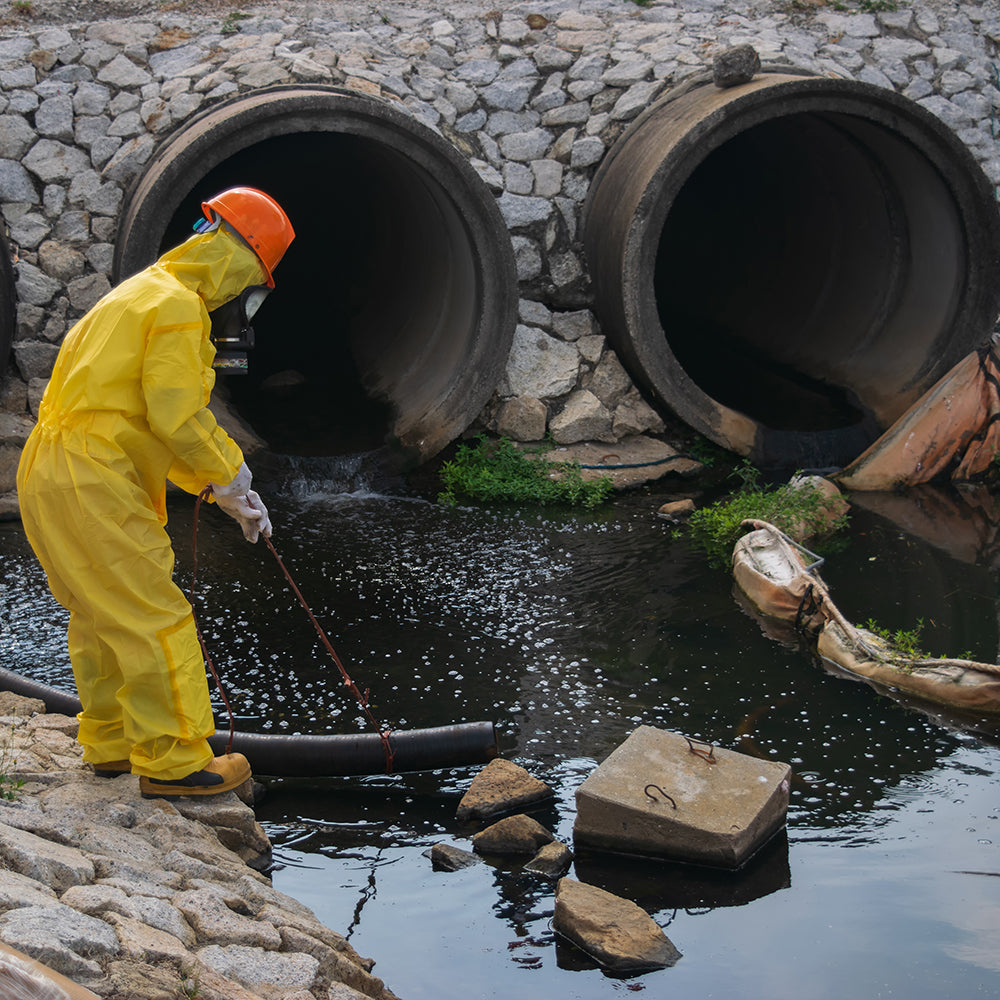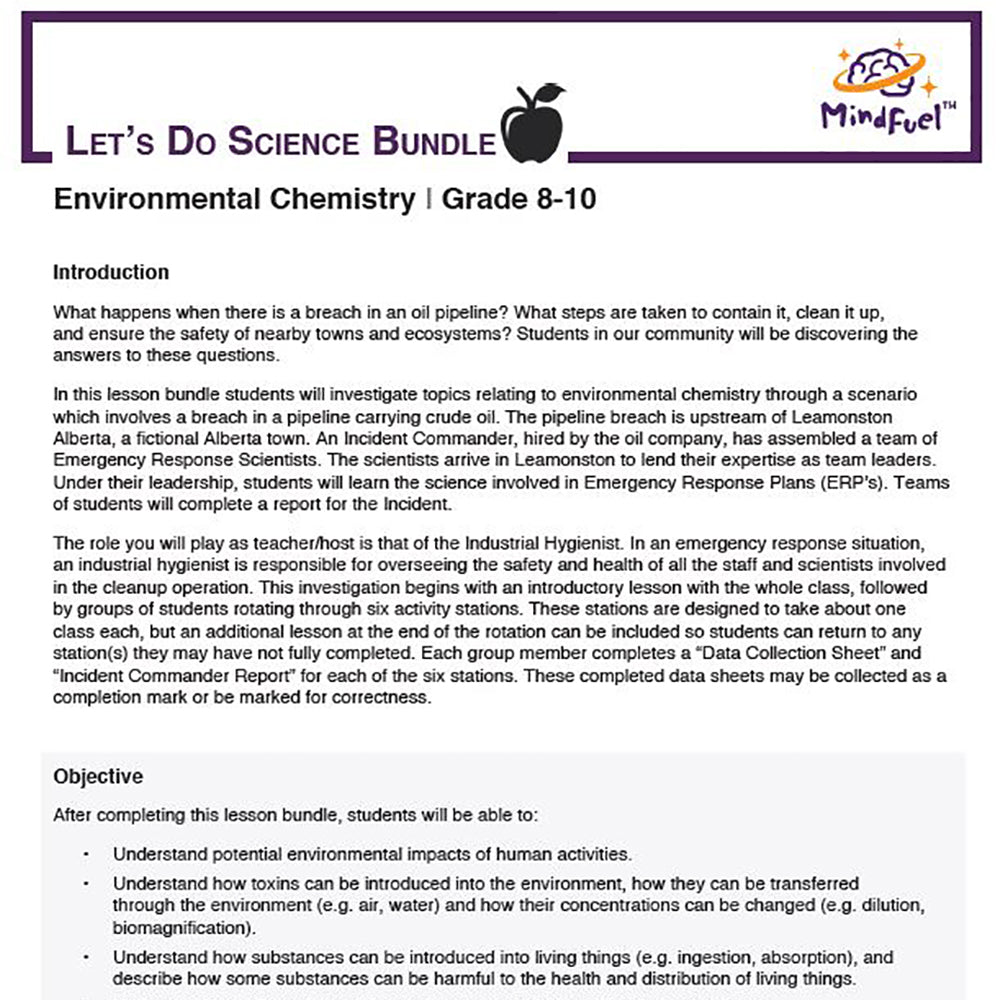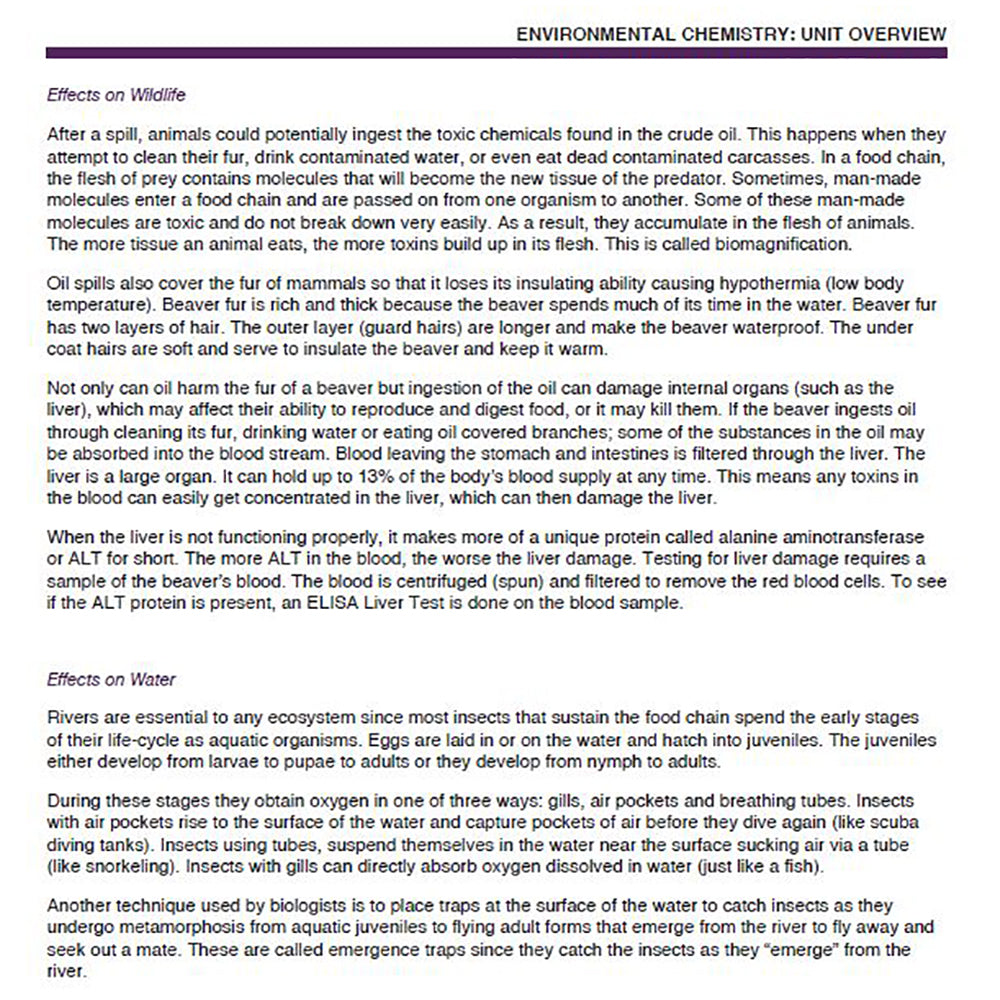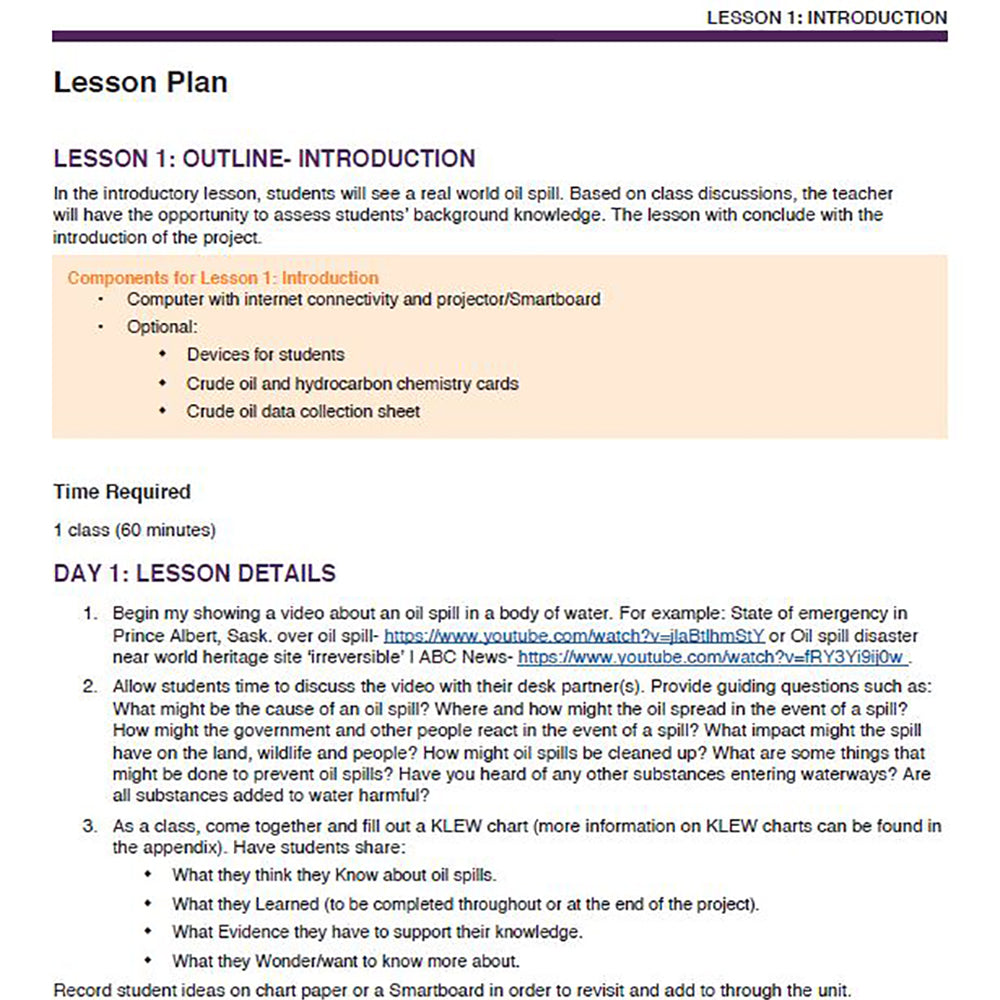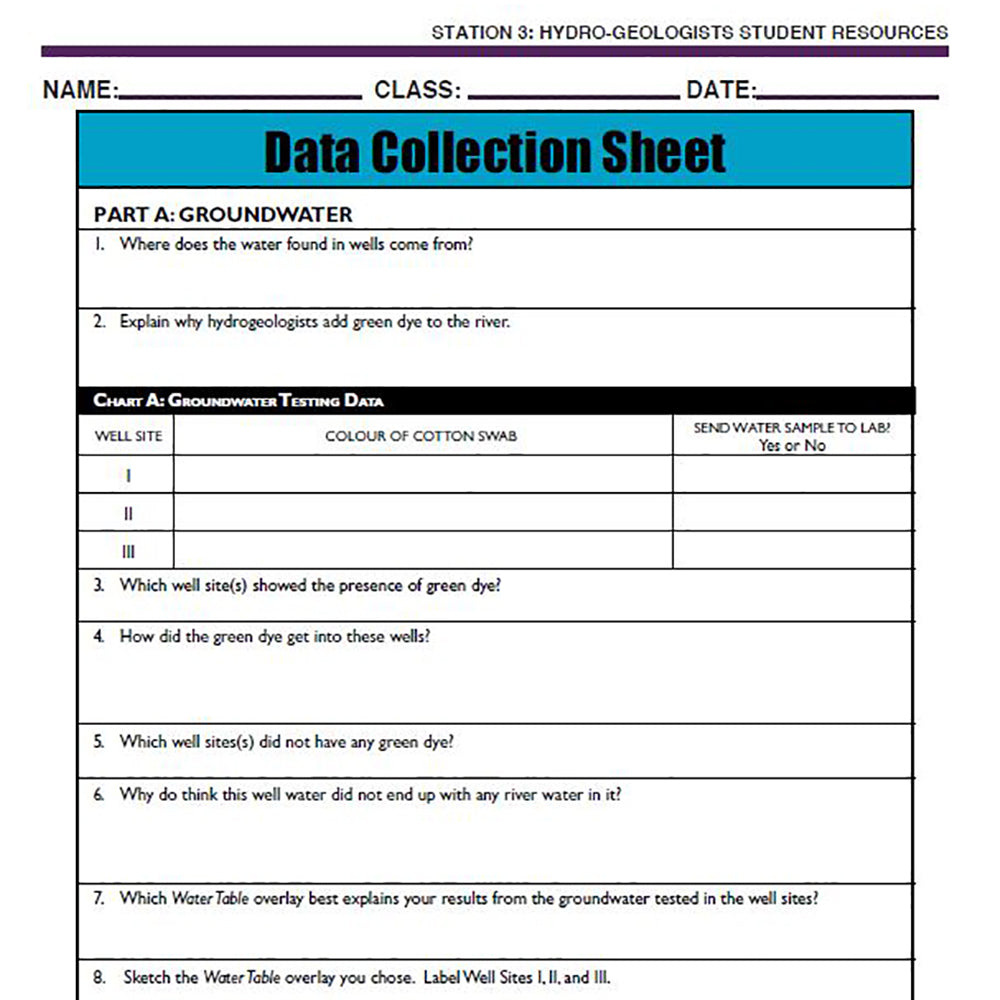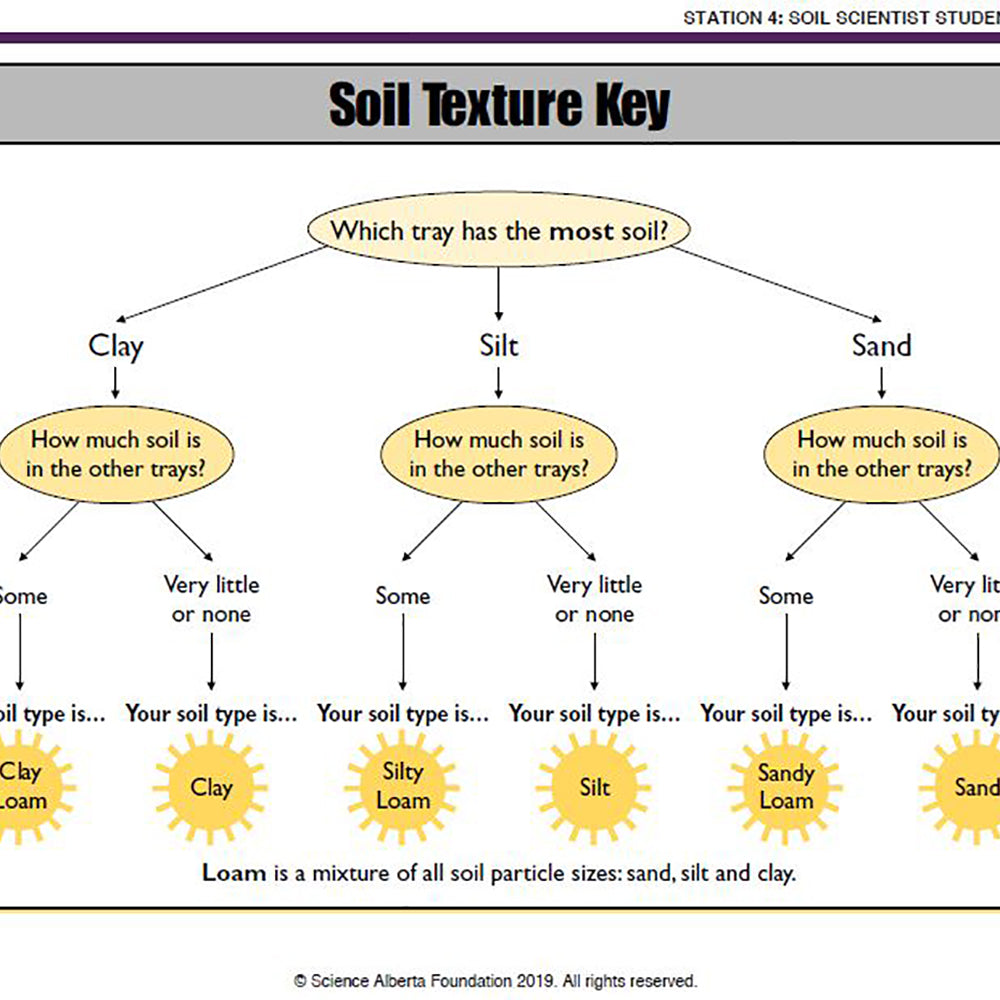MindFuel
Environmental Chemistry - Let's Do Science Bundle
Environmental Chemistry - Let's Do Science Bundle
Couldn't load pickup availability
Downloadable (1 PDF - 130 pages)
The following activities are included in this guide. The list is not prescriptive and teachers may select activities that are most appropriate for their students.
| Activity | Overview | Resources Included | Additional Resources Required |
|
Lesson: Introduction |
In the introductory lesson, students will see a real world oil spill. Based on class discussions, the teacher will have the opportunity to assess students’ background knowledge. The lesson with conclude with the introduction of the project. |
Lesson plan Crude oil and hydrocarbon chemistry cards Crude oil data collection sheet |
Computer with internet access and projector/Smartboard Optional: devices for students with internet access |
|
Station: Wildlife Biologist |
Using the beaver as an indicator species, students will study beaver pelts and liver test results to determine if the oil spill will have an impact on the health of mammals in Leamonston’s ecosystem and then predict possible future consequences to the food chain. |
Station plan Additional Information Bubbles Beaver Pelt Card Liver Damage Card Beaver Pelt A and B Close Up Data Collection Sheet Quadrant cards for Beaver A and B ELISA Liver Test Results |
Eight envelopes 4 arrows printed Optional: device with internet access |
|
Station: Aquatic Ecologist |
Students will study river samples containing aquatic invertebrates (insects) to ascertain the effects of the oil spill on this part of the food chain. |
Station plan Insect Pictures Aquatic Insects card Emergence Traps card Aquatic Insect Reference Chart Data Collection Sheet Incident Commander Report Aquatic Insect Sorting Chart I and II Emergence Trap Sorting Chart I and II Food Web 4 arrows |
Access to a laminator Four glass jars Water Insect net Tray Optional: device with internet access |
|
Station: Hydro-geologists |
Students will test water samples from various wells near the town site to determine whether oil from the spill has moved into the groundwater and contaminated local drinking water wells. |
Station plan Well Sites Map Groundwater and Concentration card Data Collection Sheet Well Sites Cross Section diagram Water Table Overlay Benzene Gas Chromatograph Results card Incident Commander Report |
3 opaque glasses, mugs or other containers which can hold liquid Water Green food coloring 3 Cotton swabs for each group Pencil Optional: device with internet access |
|
Station: Soil Scientists |
Students will determine which soils around the town site are most difficult to cleanup once contaminated, by studying soil properties (soil texture and organic content). |
Station plan Soil Properties card Soil Components Background Organic Matter Content card Data Collection Sheet Soil Texture Key Incident Commander Report |
Sand Potting soil 2 trays or containers 2 sieves of differing hole sizes (very small and small) 2 bowls 4 Petri dishes Scale Flour, cocoa powder or another substance which somewhat resembles ash Optional: device with internet access |
|
Station: Environmental Toxicologist |
Students will ascertain possible risks to the local ecosystem by studying tissue samples of organisms for biomagnification of toxic components from this oil spill. Students will participate in a role playing game to understand how biomagnification occurs in ecosystems. |
Station plan Biomagnification Case Study card Data Collection Sheet Incident Commander Report Sparrow Feeding Frenzy rules Famished Falcon rules Autopsy Results card Mountain Valley Food Web |
60 small bugs or small objects in Small stickers, marker or paint 15 small containers or bags (representing the sparrows) 4 tweezers 4 tongs 4 large containers or bags (representing the falcons) Optional: access to laminator |
|
Station: Recovery Specialist |
Students will learn about a variety of clean up techniques in an oil spill simulation and then decide on the best method to clean up this oil spill. |
Station plan Data Collection Sheet Incident Commander Report Clean-up Methods Cards (x5) |
Vegetable oil Cocoa powder Absorbent material (such as sponges, Cotton string Feathers Popsicle sticks Dish soap Dropper Container and water Ziploc bag Optional: device with internet access |
|
Lesson: Indigenous Perspective |
Indigenous people have a special connection with the environment and rely on the Earth to meet many of their needs. Therefore, environmental damage can have profound impacts on Indigenous people. In this project, students will investigate the impacts of toxins on the environment and the people living there. | Lesson plan |
Laptop or computer with internet access and projector or smartboard Devices for students with internet access |
Share
